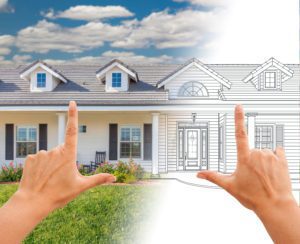For many seniors, there’s no place like home, and that’s for good reason. The familiarity and comfort of one’s own space offers a sense of security and peace that’s hard to match. However, as the population ages, the need to make homes more accommodating for this demographic has never been more pressing. “Aging in place” has become a buzzword in the housing industry, reflecting the desire and often the necessity for older adults to remain in their homes safely, independently, and comfortably.
Understanding the Importance of Aging in Place
Aging in place is a cornerstone of independent living for older adults. It’s the ability to continue living in one’s home with the support and modifications necessary to accommodate age-related changes in mobility, vision, or other physical abilities.
The advantages of staying in one’s own home during the golden years cannot be understated. Independence is a treasure, and aging in place nurtures autonomy, promoting mental and emotional well-being. Elders maintain vital connections to their communities, staying in touch with neighbors, friends, and the rhythm of their local world, which can be a fountain of contentment and even, at times, contribute to swifter convalescence from health setbacks. Moreover, the economic implications are significant; remaining at home sidesteps the often exorbitant costs associated with residential care facilities, leading to potential savings and financial stability in a stage of life when it matters most.
Room-by-Room Home Remodeling for Aging in Place
Each area of your home presents unique challenges and opportunities for aging in place remodeling. Here’s how you can tailor each room to suit the needs of an elderly resident.
Kitchen Modifications
Lowered countertops not only cater to the comfort of those who are seated or of short stature, but they also play a role in preventing strain on the back and shoulders. Pull-out shelves and drawers allow for easier access to kitchen items, eliminating the need to reach high or bend down low, which could risk a fall or injury. Additionally, an open floor space is critical; it offers ample room to navigate with aids like walkers or wheelchairs, creating a sense of independence and efficiency around the kitchen activities that form a big part of daily life. These kitchen modifications exemplify the smart, user-friendly changes that can help maintain normalcy and enjoyment in cooking and dining experiences during one’s later years.
Bathroom Adjustments
The bathroom is where most accidents happen in the home a telling statistic for the elderly. Adding things like curbless showers are not only modern and stylish but also eliminate the need to step over a threshold, which can be a trip hazard for the elderly. Or by incorporating seating within the shower, seniors may rest comfortably while bathing, reducing the strain and risk associated with standing for extended periods. Raised toilet seats facilitate ease of use for those with mobility issues, reducing the effort required to sit down and stand up again. Handheld showerheads offer control and flexibility, allowing users to direct the water exactly where it’s needed without having to move around too much. Additionally, motion-sensor lighting is an essential safety feature, providing instant illumination for nighttime visits to the bathroom, thereby helping to prevent disorientation and accidents. Each of these bathroom adjustments is designed to combine safety, functionality, and dignity for the aging population.
Exterior Accessible Spaces
Creating an accessible and secure outdoor environment is crucial for those choosing to age in place. To facilitate safety and mobility outside, installing smooth, non-slip surfaces on walkways is essential. These minimize the risks of falls and provide stable ground for walking aids or wheelchairs. In addition, gardens and yard areas should be easy to navigate. This could involve organizing the layout to remove obstacles, simplifying the design for easy upkeep, and including comfortable seating areas for relaxation. Each of these thoughtful considerations encourages seniors to spend more time outdoors, which can significantly benefit their overall well-being by promoting gentle exercise, vitamin D exposure, and a connection with nature.
Aging in place remodeling is an investment in safety, comfort, and independence for seniors. By implementing thoughtful modifications throughout the home, from non-slip flooring and grab bars to lower countertops and accessible outdoor spaces, we can create environments that support the well-being and autonomy of our aging population. Each alteration not only addresses immediate safety concerns but also caters to the evolving needs of individuals as they age. With these changes in place, seniors can confidently look forward to enjoying their homes for many years to come.














